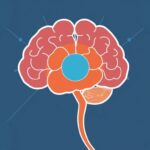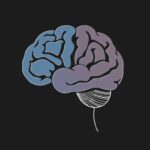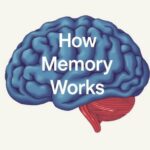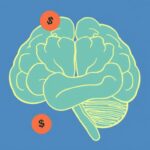Problem-solving is something we all do daily, whether we’re tackling challenges at work, making decisions in our personal lives, or navigating unexpected obstacles. But have you ever wondered if there are specific strategies, proven by science, that can help you solve problems more effectively? Good news: research from psychology, neuroscience, and education has uncovered various approaches and methods that enhance our problem-solving abilities. In this article, we’ll explore some of the most reliable problem-solving strategies backed by science — explaining how they work, why they matter, and how you can use them to think smarter and solve anything.
Understanding Problem-Solving: The Science Behind How We Think
Before diving into specific strategies, it’s important to understand what problem-solving actually means from a scientific perspective. Problem-solving involves identifying a gap between your current state and a desired goal and figuring out how to bridge that gap. The process requires cognitive functions such as reasoning, memory, attention, and creativity — all coordinated inside your brain.
There are different types of problems: some are well-defined with clear solutions, like solving a math equation, while others are ill-defined and complex, like navigating a career change. The strategies that work best depend on the nature of the problem, but certain techniques stand out across all categories.
Science shows problem-solving is a dynamic interaction between mental processes and the environment. The brain’s prefrontal cortex plays a central role in planning, decision-making, and flexible thinking, while the hippocampus supports recalling previous knowledge and experiences. Understanding how these brain areas cooperate is key to adopting effective problem-solving strategies.
Step-by-Step Problem-Solving Process

To solve any problem efficiently, following a structured approach can help. Science-backed research suggests tuning into the following steps:
- Identify and define the problem: Be crystal clear about what needs solving.
- Analyze the problem: Gather information and understand the problem’s components.
- Generate possible solutions: Brainstorm multiple options without judgment.
- Evaluate alternatives: Weigh pros and cons of each solution.
- Select and implement a solution: Choose the best option and put it into action.
- Reflect and learn: Assess the results and adjust if necessary.
This sequence aligns with the scientific understanding of how we solve problems, but the real power comes from combining it with specific strategies that enhance each phase.
Scientific Strategies to Boost Your Problem-Solving Skills
Now that we know the basic process, let’s explore some proven strategies supported by psychological and neuroscientific studies. These strategies not only increase effectiveness but also improve creative thinking and reduce errors.
1. Break Problems Into Smaller Parts (Chunking)
Large problems can feel overwhelming — breaking them into smaller, manageable chunks is a strategy called chunking. Psychological research has found this technique reduces cognitive overload and improves focus.
For example, instead of trying to reorganize your entire house in one day, divide the task into smaller zones, like your bedroom, living room, and kitchen. This makes the problem more approachable and lets you see progress clearly.
2. Use Analogies and Metaphors
Our brains are wired to make connections. Using analogies or metaphors activates different neural pathways and promotes creative problem-solving. By relating an unfamiliar problem to something known, you can gain new insights.
An example might be approaching a work project the same way a chef plans a meal: balancing ingredients (resources) and timing (deadlines). Science shows this strategy sparks innovative ideas by linking different mental frameworks.
3. Employ Brainstorming Without Judgment
During idea generation, it’s crucial to withhold judgment. Research in creativity highlights that premature criticism kills idea flow. Allowing yourself and your team to freely generate ideas increases the quantity and often the quality of potential solutions.
This uncensored phase is essential — later on, you’ll use critical thinking to evaluate.
4. Utilize Visualization Techniques
Visual thinking can transform abstract or complex problems into tangible layouts. Scientific studies on visualization reveal it improves memory, understanding, and problem-solving speed.
Simple techniques include drawing diagrams, mind maps, or flowcharts. Visual tools help you organize information and spot patterns.
5. Apply the “Five Whys” Technique
Root cause analysis through the “Five Whys” method involves asking “why?” five times (or more) to uncover the underlying cause of a problem. This technique is proven effective in quality management and troubleshooting.
For example, if your team missed a project deadline, repeatedly asking why reveals factors such as unclear goals or resource constraints, not just the surface issue of procrastination.
6. Incorporate Time Constraints to Stimulate Focus
While time pressure can be stressful, moderate deadlines can enhance concentration and problem-solving. Research shows that setting focused time blocks (like the Pomodoro Technique) combats procrastination and encourages deeper engagement.
Balancing urgency without overwhelming yourself creates an environment conducive to producing solutions.
7. Take Breaks and Use Incubation to Boost Creativity
Sometimes, stepping away from a problem leads to breakthroughs. Cognitive science supports the concept of incubation — subconscious processing during downtime.
After immersing yourself in a problem, taking a walk or sleeping on it often leads to “aha” moments.
8. Use Diverse Perspectives and Collaborative Problem-Solving
Science confirms that diverse teams outperform homogeneous groups in problem-solving. Different experiences, skill sets, and viewpoints contribute to richer analysis and more innovative solutions.
Engage others and encourage open communication to harness collective intelligence.
9. Practice Metacognition: Think About Your Thinking
Metacognition — awareness and regulation of your own thought processes — improves problem-solving by helping you recognize biases, identify errors, and adjust strategies.
Regularly ask yourself questions like “Is this approach working?” or “Am I jumping to conclusions?” to refine your thinking.
Comparing Popular Problem-Solving Techniques
There are many named problem-solving techniques out there. How do they stack up scientifically? Here’s a useful table summarizing some common methods and their scientific backing:
| Technique | Description | Scientific Support | Best For |
|---|---|---|---|
| SMART Goals | Setting Specific, Measurable, Achievable, Relevant, Time-bound objectives | Strong; improves focus and motivation through goal clarity | Defining problems and guiding solution implementation |
| Mind Mapping | Graphical tool to organize ideas and concepts | Moderate; boosts creativity and information retention | Idea generation and planning |
| Design Thinking | User-centered iterative approach involving empathy, ideation, prototyping | Strong; linked to innovation and user satisfaction | Complex, ambiguous problems requiring creativity |
| The Scientific Method | Systematic experimentation to test hypotheses | Extensive; foundational in research and critical thinking | Objective, measurable problems with variables |
| Heuristic Methods | Rule-of-thumb shortcuts to simplify decisions | Mixed; efficient but prone to biases | Quick decisions under uncertainty |
Common Cognitive Biases That Sabotage Problem-Solving
No matter how smart we are, our brains are prone to biases that can undermine effective problem-solving. Awareness of these biases enables correction and better outcomes.
- Confirmation Bias: Favoring information that confirms existing beliefs.
- Fixation: Getting stuck on one solution or approach, ignoring alternatives.
- Anchoring Bias: Relying too heavily on the first piece of information encountered.
- Overconfidence: Excessive faith in your own judgments without enough evidence.
- Availability Heuristic: Judging likelihood based on how easily examples come to mind.
Combating these requires deliberate reflection, seeking contradictory evidence, and soliciting others’ perspectives.
Building a Problem-Solving Mindset for Life
Beyond strategy, cultivating the right mindset is vital. Science reveals that a growth mindset — believing abilities can improve through effort — correlates with greater resilience and problem-solving persistence.
Adopting curiosity, openness to failure, and patience enhances brain plasticity and your capacity to handle novel challenges. Try to view problems as opportunities for learning rather than threats.
Tools and Technologies That Aid Scientific Problem-Solving
Modern science provides numerous tools to assist problem-solving from data analysis to visualization:
- Data Analytics Software (e.g., Excel, Tableau): transforms raw data into insights.
- Mind Mapping Apps (e.g., MindMeister, XMind): facilitate creative thinking.
- Project Management Tools (e.g., Trello, Asana): track tasks and solutions progress.
- Collaborative Platforms (e.g., Slack, Microsoft Teams): enable diverse team problem-solving.
- Simulation and Modeling Software (e.g., MATLAB, Simulink): test hypotheses virtually.
Leveraging these resources can dramatically improve the speed and quality of your problem-solving process.
Real-World Examples of Science-Backed Problem-Solving Strategies at Work
To ground these concepts, let’s look at how scientific problem-solving strategies have played out in real scenarios:
- NASA’s Apollo Mission: Faced with unexpected technical failures during the mission, engineers broke down complex problems into manageable parts, used root cause analysis (Five Whys), and collaborated intensively, showcasing the power of structured, scientific strategies under pressure.
- Healthcare Innovation: Design thinking was applied in hospitals to redesign patient experiences, leading to better outcomes and satisfaction by empathizing with user needs and iterating solutions.
- Product Development: Tech startups routinely use brainstorming without judgment and diverse team input to generate revolutionary new products, followed by rapid prototyping and reflection.
Tips to Integrate Science-Backed Problem-Solving Into Your Daily Life
Mastering these strategies isn’t hard, but it requires conscious effort and practice. Here are a few actionable tips to get started immediately:
- When faced with a problem, write it down clearly and break it into smaller parts.
- Set aside dedicated, distraction-free time blocks to focus on problem-solving.
- Use visual tools like mind maps or flowcharts to organize your thoughts.
- Practice asking “why?” multiple times to reach root causes.
- Generate at least five different solutions before evaluating.
- Seek feedback from diverse people and perspectives.
- Take short breaks during long problem-solving sessions to refresh your mind.
- Reflect on what worked and what didn’t after implementing solutions.
Conclusion
Problem-solving is both an art and a science — and by embracing strategies backed by scientific research, you can sharpen your abilities to tackle challenges more effectively. Techniques such as chunking, analogies, brainstorming, visualization, and root cause analysis are not just abstract concepts; they have been rigorously tested in laboratories and real-world scenarios, proving their worth. Coupled with awareness of cognitive biases and a growth mindset, these strategies transform problems from intimidating obstacles into opportunities for creativity and growth. Whether you’re solving everyday issues or large, complex dilemmas, integrating science-backed problem-solving methods will help you think smarter, act faster, and achieve better results. Start practicing these approaches today and watch your problem-solving skills soar to new heights.





















Лучший подход к решению проблем — сначала чётко определить, в чём именно проблема и какие есть ограничения. Разбивай задачу на части, выдвигай гипотезы и быстро проверяй их экспериментами, собирая обратную связь. Пользуйся ментальными моделями (первопринципы, обратный ход, аналогии), делай паузы для инкубации и обновляй оценки по мере новых данных. Гибкость и постоянная проверка гипотез важнее слепого следования плану.
– Марк (мужчина)
Спасибо за полезную и понятную статью! Практические, научно обоснованные приёмы действительно помогают мыслить яснее и быстрее решать задачи. Большое спасибо!
Майя